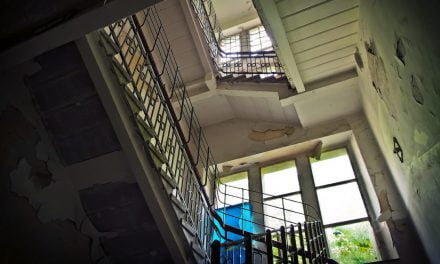The California housing market continues to flounder almost two years after the official end of the nation’s Great Recession (June 2009), and so does the broader economy. Statewide home sales volume and prices continue to decline and the present trend in the number of single family residential (SFR) construction starts is downward as well. [For more information regarding housing market data, see the first tuesday Market Charts.]
The major hurdle in the California housing market is the outstanding number of homes with delinquent mortgages kept off the market — a problem that cannot cure itself. Lenders continue to wait for prices to increase (or their profits to enlarge and cover the losses) before they will clear out their store through foreclosure and real estate owned (REO) resales. However, home prices will not stabilize or rise until that shadow inventory is dealt with and those hundreds of thousands of foreclosures no longer loom over the heads of current and potential homeowners. [For more information regarding shadow inventory, see the March 2010 first tuesday article, Where have all the REOs gone? and the October 2010 first tuesday article, Lenders prefer foreclosures, not short sales.]
Loan modifications also remain scarce. Lenders — who are often merely loan servicers rather than the true mortgage owners — make more from fees and charges on defaulted loans than they do on modifications. Thus, you won’t catch a lender doling out loan mods with a smile on his face. They are bad for their business model, part of the “rentier class” issue that is surfacing with deflationary real estate prices as far forward as we can see. [Stay tuned to the first tuesday journal online for a future article on the rentier class!]
Senators are currently pitching legislation that would require homeowners to be evaluated for a modification before the foreclosure process can start. A lender’s analysis of who qualifies for a mod will ideally be streamlined and available for the public to study, making any failure to honor the analysis grounds for blocking an attempt to foreclose.
These actions will still require lender approval if any binding legislation is to be enacted, and their voluntary compliance with consumer protection efforts will never take priority over filling their pocketbooks (except of course for public relations purposes).
first tuesday take: The psyche of a lender is simple: they are in the money management business so it’s all about the money. This attitude sits well with their well-leashed politicos, which explains why we have yet to see a policy or program forcing lender participation in anything that keeps homeowners in their homes — the “rentier suppression” issue.
Unless and until the government actively advocates bankruptcy cramdowns for the homebuyer as well as the investor, foreclosure will continue to win over loan modifications and principal reduction (cramdowns). [For more information about the different treatment given underwater investors and businesses, see the January 2011 first tuesday article, The inconsistent cramdown policy.]
The federal government made a weak attempt to advocate for homeowners in the form of the Home Affordable Modification Program (HAMP). HAMP’s goal was to modify three to four million loans. The program fell short of this objective by about 2.5 million, all due to one major Achilles’ heel: participation by lenders was voluntary. [For more information regarding HAMP, see the June 2011 first tuesday article, More bad news for HAMP .]
We at first tuesday will continue to keep this conversation going until something is done. Lenders will not write down their loan portfolios to current market value due to accounting standards being undercut by congressional duress on the accountancy agency. They will not grant cramdowns in bankruptcy for underwater homeowners or approve loan modifications until the government or judiciary forces them to. As they hoard their rather massive shadow inventory of yet-to-be-foreclosed delinquent loans and REO properties and refuse to report their losses, the housing market stagnates – dead in the sea of underwater properties.
Streamlining the standards by which lenders decide who gets a modification is a step forward, but little else since the standards are not compulsory. They are to later humiliate the lenders who disregard them. Until power is returned to the judicial branch to mandate principal reduction for SFR homeowners, the most viable way to keep people in their homes is to hold lenders accountable for their famously inconsistent public (and actual) policies. [For more information regarding judicial cramdowns, see the November 2010 first tuesday article, Lenders unwilling to reduce principal balances under California’s ‘Keep Your Home’ program and the January 2010 first tuesday article, Cramdowns, cramdowns, cramdowns!]
Re: “As housing goes, so goes the economy” from the NY Times














Cramdowns are a financial penalty to prudent people who did not buy overpriced homes. Cramdowns keep homes off the market, lessen available housing inventory, and maintain inflated home prices. And they backfires in the long run, because prudent people recognize that home prices are still inflated in most areas, so they remain on the sidelines, unwilling to buy until prices come down to viable levels. I’m sorry that some people have to vacate their homes, but there’s no shame in renting.